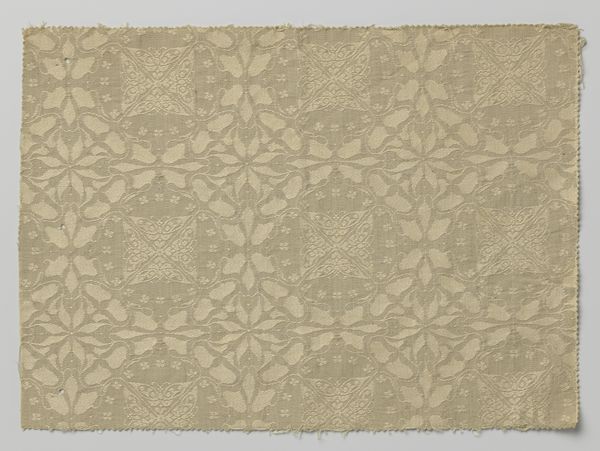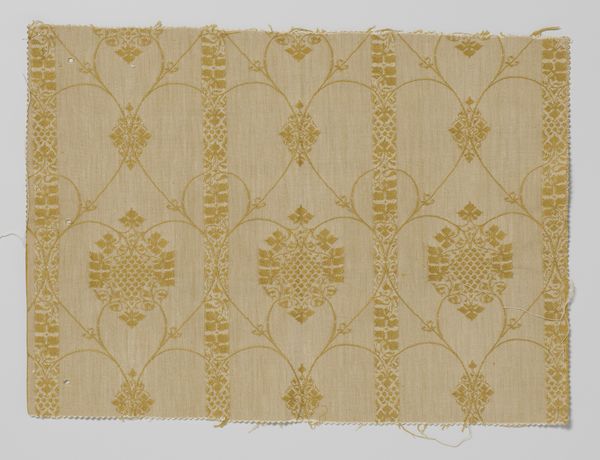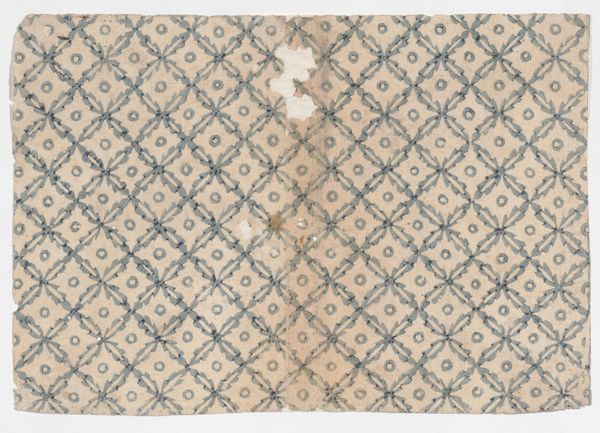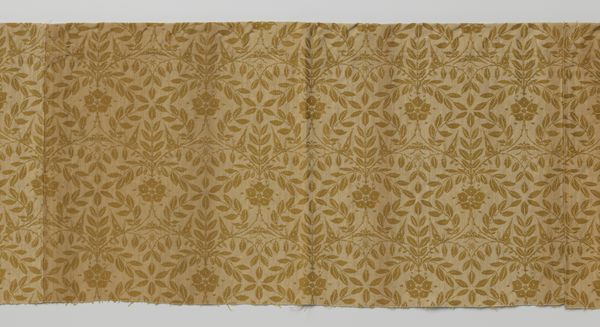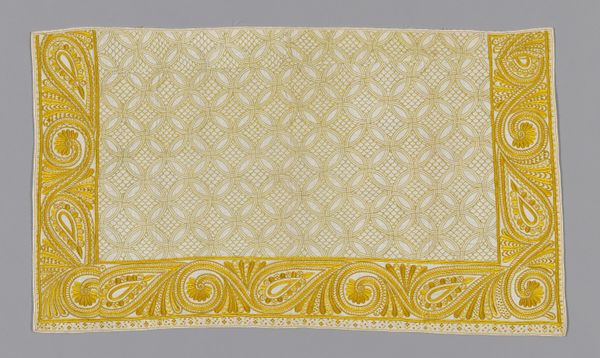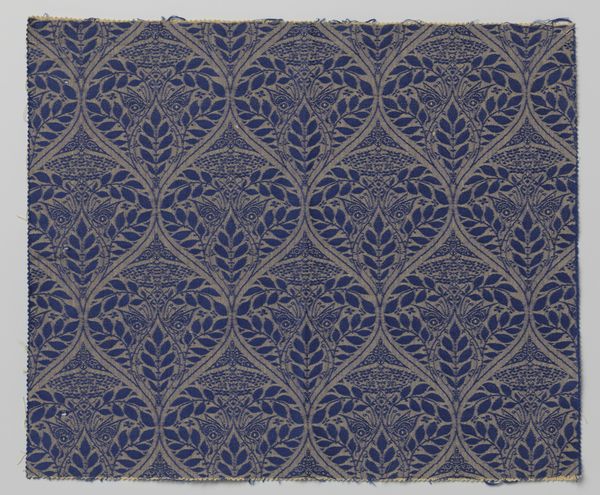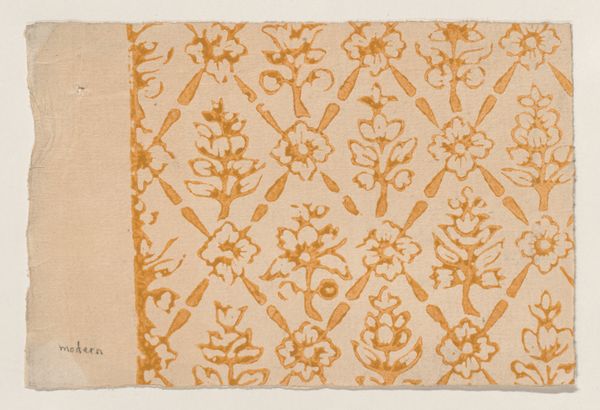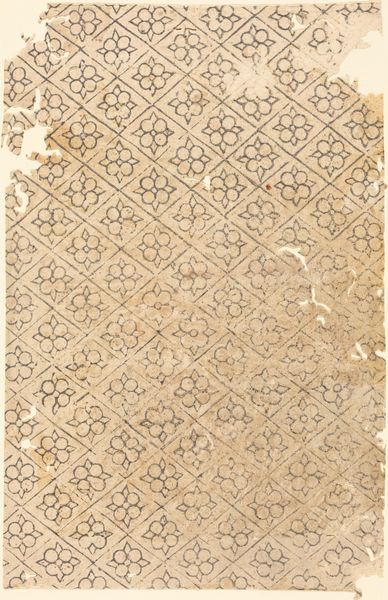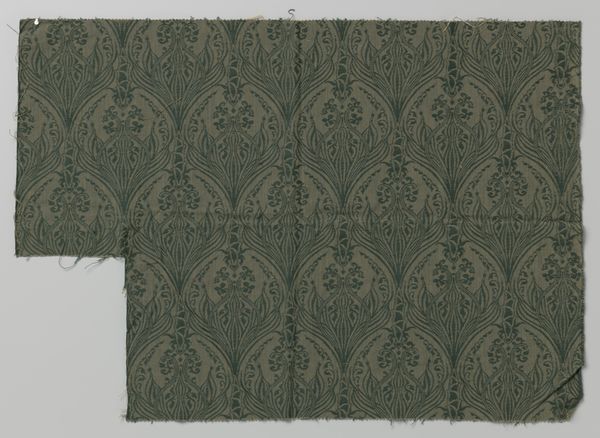
Bespanningsstof, jacquardweefsel met patroon van spitsovalen, goudgele inslag op witte ketting c. 1920 - 1930
0:00
0:00
theonieuwenhuis
Rijksmuseum
Dimensions: height 133.0 cm, width 59.0 cm
Copyright: Rijks Museum: Open Domain
Curator: Here in the Rijksmuseum, we're looking at a piece of textile design, titled "Bespanningsstof, jacquardweefsel met patroon van spitsovalen, goudgele inslag op witte ketting", made around 1920 to 1930 by Theo Nieuwenhuis. Editor: My immediate impression is one of restrained elegance. The colour palette is very soft, and the repeating pattern gives it a formal, almost architectural feel. Curator: Indeed. Nieuwenhuis was a prominent figure in the Dutch Arts and Crafts movement, which emphasized craftsmanship and the integration of art into everyday life. This textile exemplifies that ethos, designed for interior decoration, likely as upholstery or wall covering. Editor: The elongated oval shapes, the "spitsovalen" as the title describes, strike me as quite stylized. They’re almost heraldic in their symmetry and placement. There is also a clear repetition of other shapes as well, and it calls back to historical family crests from many european societies. Curator: That’s a keen observation. The heraldic reference aligns well with the historical context. The early 20th century saw a rise in nationalistic sentiments and a renewed interest in historical aesthetics. Editor: So, while it is clearly a mass-produced fabric through Jacquard weaving, there’s a conscious effort to evoke handcraft and even nobility through the symbol and geometric forms. The pattern also shows both a natural element, which can be observed from the overall look of the patterns. But also the rigid order of the arrangement gives it a modern taste for the early 20th century. Curator: Exactly. The machine-made aspect allowed for broader access to aesthetically pleasing textiles, democratizing design. The Arts and Crafts movement grappled with this tension – wanting to elevate design for everyone while simultaneously valuing the hand-made. Editor: I think the power of this work lies in how successfully it blends those seemingly contradictory ideas – tradition and modernity, handcraft and industrial production – into a single, harmonious design. Curator: I agree entirely. By exploring its materiality and motifs, this seemingly simple fabric reveals the complex cultural forces at play in the early 20th century.
Comments
No comments
Be the first to comment and join the conversation on the ultimate creative platform.
